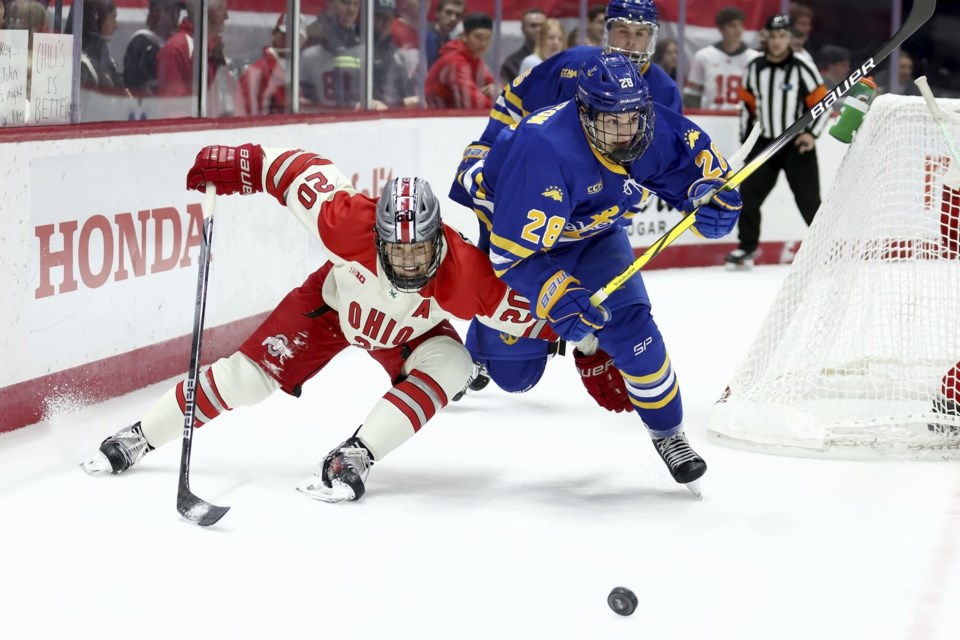The NCAA Division I Council on Thursday approved a rule allowing players with starting next season, a landmark decision that has the potential of shaking up the NHL鈥檚 two largest sources of developmental talent.
The decision, effective Aug. 1, lifts the NCAA鈥檚 longstanding ban on CHL players who were previously deemed to be professionals because they received a stipend of up to $600 per month for living expenses.
The approval was expected after the council introduced a proposal to lift the ban last month. Players competing at the major junior ice hockey or on professional teams can retain NCAA eligibility as long as they are not paid more than actual and necessary expenses.
The decision also applies to skiing, bringing both in line with NCAA eligibility rules for other sports.
In doing so, the council opened the door for a major change in how players approaching their 16th birthdays decide where to play. Rather than having to choose between one or the other, CHL players can now play NCAA hockey when they become college eligible.
The decision has the potential of costing the CHL top 18-and-older talent or flooding U.S. college rosters with 91原创s.
filed Aug. 13 in U.S. District Court in Buffalo, New York, challenging the ban of players from the CHL鈥檚 Western Hockey League, Ontario Hockey League and Quebec Maritimes Junior Hockey League.
The lawsuit was filed on behalf of Riley Masterson of Fort Erie, Ontario, who lost his college eligibility two years ago when, at 16, he appeared in two exhibition games for the OHL鈥檚 Windsor Spitfires. It lists 10 Division I hockey programs, which were selected to show they follow the NCAA鈥檚 bylaws in barring current or former CHL players.
In a separate development in September, , making him the first CHL player to attempt to play hockey at the Division I U.S. college level. The 20-year-old Whitehead said he plans to play this season for the WHL Regina Pats before playing for the Sun Devils in 2025-26.
The stipends CHL players receive are not considered as income for tax purposes. College players, meantime, receive scholarships and now can earn money through endorsements and other use of their name, image or likeness.
The eligibility change could also impact the USHL, which previously attracted players who turned down competing in the CHL in order to maintain their college eligibility. Two recent NHL No. 1 draft picks, San Jose forward Macklin Celebrini and Buffalo Sabres defenseman Owen Power, both played in the USHL.
Since its inception, the USHL development model has been "intentionally aligned with the student-athlete experience," the league wrote in a statement responding to the NCAA decision. "The USHL remains the world鈥檚 premier development path. All aspects of the league are focused on preparing athletes for collegiate and professional hockey, inclusive of on-ice, academic and character development.
___
AP college sports:
John Wawrow, The Associated Press


